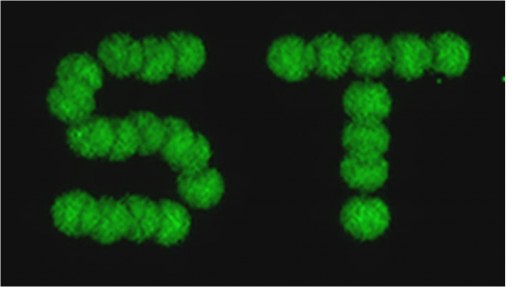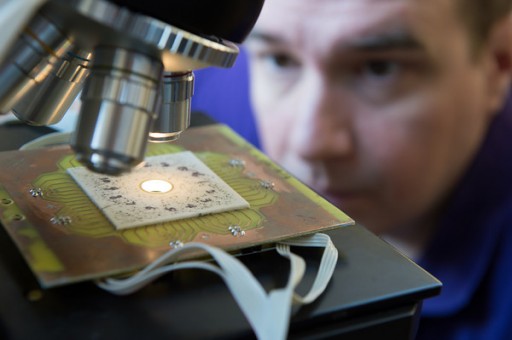Ultrasonic lasso can grip and move cells
April 11, 2013

The researchers moved a 10 micrometer sphere to spell write and S and a T for SonoTweezers, the project that funds the work (credit: Bruce Drinkwater/University of Bristol)
A “sonic lasso” that can grip microscopic objects, such as cells, and move them around has been demonstrated by researchers at the University of Bristol’s Department of Mechanical Engineering and University of Dundee’s Institute for Medical Science and Technology.
The cells and other small objects are trapped by a spinning ultrasonic vortex, which acts as a lasso that can be controlled and moved.
This new technology makes possible applications such as assembling human tissue from a collection of cells and assembling nanomaterials.
“Our research has shown we can grip and move particles pretty much anywhere and along any path,” said Bruce Drinkwater, Professor of Ultrasonics in the Department of Mechanical Engineering, who led the study. “The impressive thing is that it is completely non-contact, harmless, and ideal for moving delicate things, such as cells, around under a microscope. With further development this could be used to assemble human tissue as part of a tissue engineering production line.”
The researchers use acoustic vortices, known as Bessel-functions, that trap and position microparticles. Like a rope lasso, the waves carry both linear and rotational momentum, so they can cause the objects to spin as well as move.
A circular device, made up of 16 ultrasound sources, generates and manipulates an acoustic field within a chamber, trapping microparticles and clusters of microparticles.
Changes in the phase of the sinusoidal signals applied to the sources result in the movement of the Bessel-function pressure field and therefore the microparticles.
This research has been funded by the Engineering and Physical Sciences Research Council (EPSRC) through the Electronic Sonotweezers program.
